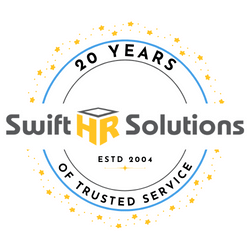Reskilling and Upskilling: HR's Role in the Future of Work
Helping employees improve their skills has long been a focus of HR leaders, but with the pace of change today, it is more important than ever. In a recent survey, 83% of employers said that their employees will need new skills because of the rising prevalence of AI.(1) As technology advances and industries undergo transformation, employees must adapt their skills to stay relevant and thrive in their careers. Technical skills will obviously be important, but so will soft skills like emotional intelligence and critical thinking. Human Resources (HR) plays a crucial role in fostering a culture of learning and enabling reskilling and upskilling initiatives. In this blog post we’ll explore this role and look at how one of our Consultants is putting upskilling practices in place with a Client.
The Importance of Reskilling and Upskilling
Reskilling refers to acquiring new skills to perform different tasks or transition into new roles, while upskilling involves enhancing existing skills to meet changing job requirements. HR leaders understand that reskilling and upskilling employees are critical to future-proofing the workforce, improving employee retention, and fostering innovation and adaptability within the organization. For small businesses especially, reskilling and upskilling save money in the long term as it helps improve employee retention and customer experience.
The Role of HR
It is difficult to reskill or upskill when you don’t have a clear plan of what your future workforce should look like. Strategic HR leaders look at where the business wants to go and determine the skills and people the business needs to get there. They then develop a roadmap for developing and acquiring those skills, adjusting along the way.
Uncovering skills gaps
Starting with business goals in mind, HR can conduct a skills gap analysis to guide development efforts. Not only will employers get insights into the entire workforce, but individual employees will gain an understanding of the skills they need for their future roles. This is an important element of strategic workforce planning, or aligning a company’s workforce capabilities with the long term business objectives.
When Senior HR Consultant Deanna Neher looked at the strategic plan objectives she had developed with her Client, she needed to figure out what skills the employees needed in order to successfully reach those goals. It was determined that they would upskill the leadership team’s people management and accountability competencies. She then put together a series of management training sessions to build these skills.
Define and Measure Success
Although continuous learning does improve employee engagement, strategic HR leaders don’t offer training simply to make employees happy. It is critical to define the target outcomes for any initiatives meant to upskill or reskill. HR not only creates these goals, but develops a plan for following up and measuring success.
For Deanna’s upskill training initiative, her target outcomes are:
More mentoring and development, and more solutioning on root causes
Executives with more focused white space time for deep thinking and strategy
Stronger relationship with clients and each other
More cross-team collaboration with fewer silos
Clear responsibility and accountability at all levels
Build learning into the culture
HR leaders can promote learning by finding and removing any barriers to learning, and linking learning to career advancement. Company leaders must buy into this and pursue their own training so that they demonstrate the organization’s commitment to learning. Once training has been chosen and facilitated, it is just as important to provide opportunities for the team to practice their new skills.
Deanna understands that the major problem with most training initiatives is that many companies pay for training and then expect the learnings to simply stick. In reality, to make a training successful you must revisit and reinforce the concepts and principles in order for them to take hold in your company. “I am leveraging the training by then installing the language and learnings into our culture through practice and accountability” says Deanna.
Leveraging Learning Technologies
Technology has made it easier than ever to bring flexible and scalable learning opportunities to employees. Virtual Workshops and on-demand training modules are two examples of technologies that facilitate reskilling and upskilling. HR's role is to identify and implement the right learning technologies that align with the organization's needs and provide a seamless learning experience.
As part of her learning plan, Deanna is having all managers take a New Manager Development training, and she has already had the entire company take training to learn how to give better feedback. Because technology makes it easy to have the entire company take the same training, there will be a common language used by everyone. This common language will enhance understanding and communication as they continue to practice the learnings and develop the critical competencies.
By prioritizing continuous learning and professional development, HR empowers employees to adapt, innovate, and thrive in the future of work. Embracing reskilling and upskilling is not just a strategic move; it is an investment in the growth and sustainability of the organization and its workforce.
Do your employees have the skills they need to be part of your company’s future? Ask us how we can partner with you to develop a strategy to upskill your team.
(1)https://www.inc.com/minda-zetlin/a-survey-of-31000-employees-shows-49-percent-fear-ai-will-steal-their-jobs-theyre-right-to-worry.html?utm_source=linkedin&utm_campaign=freeform&utm_medium=social

